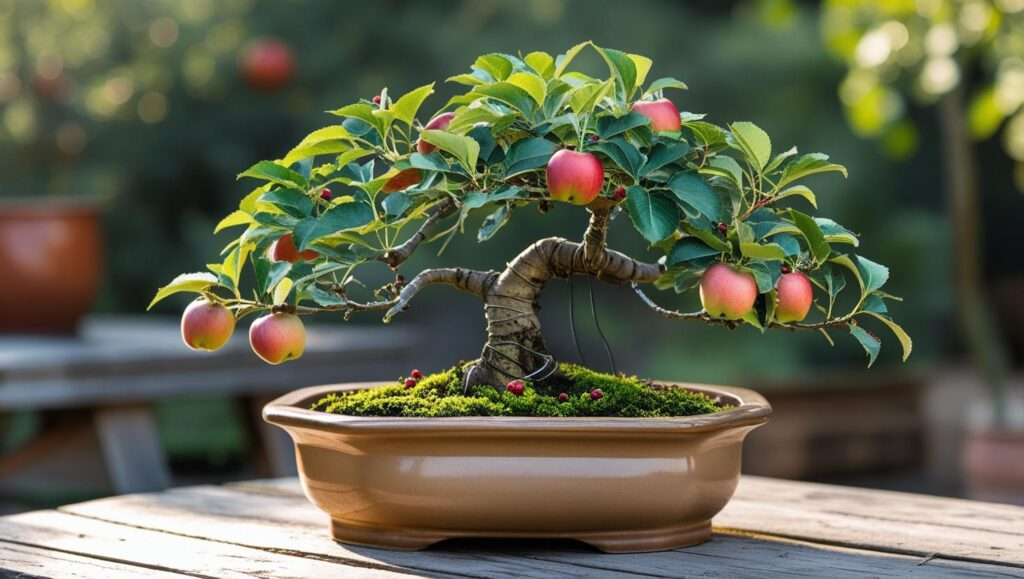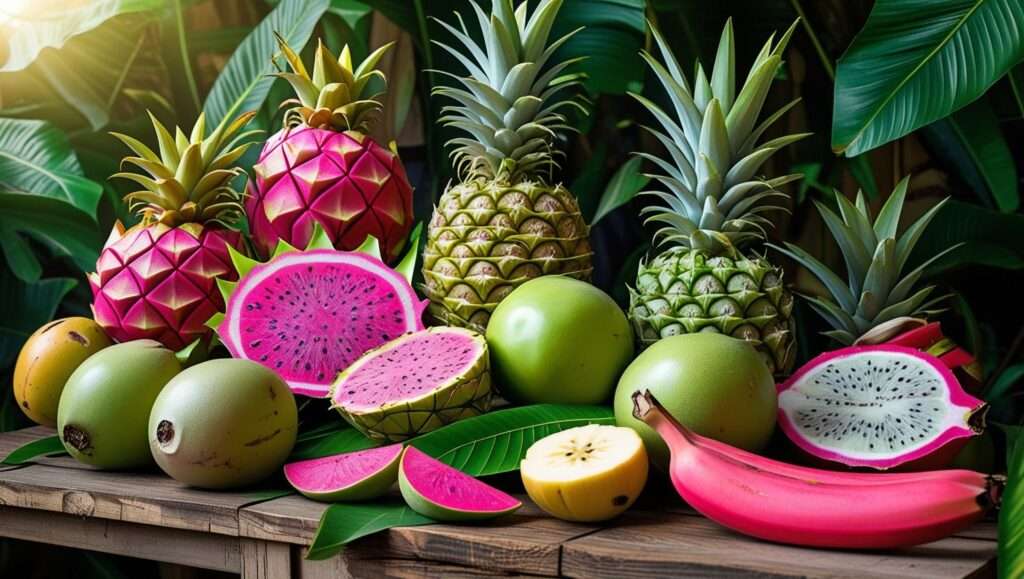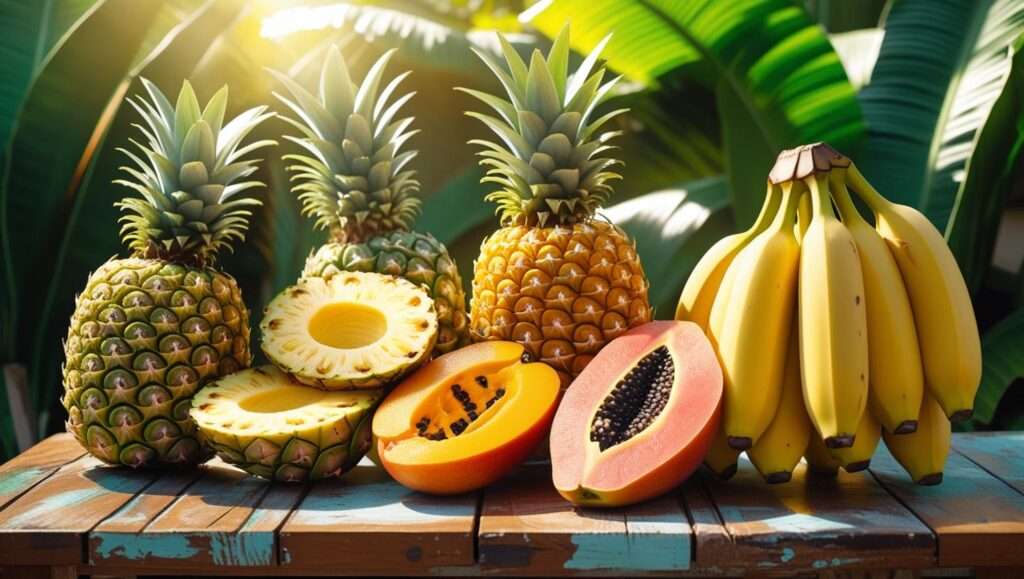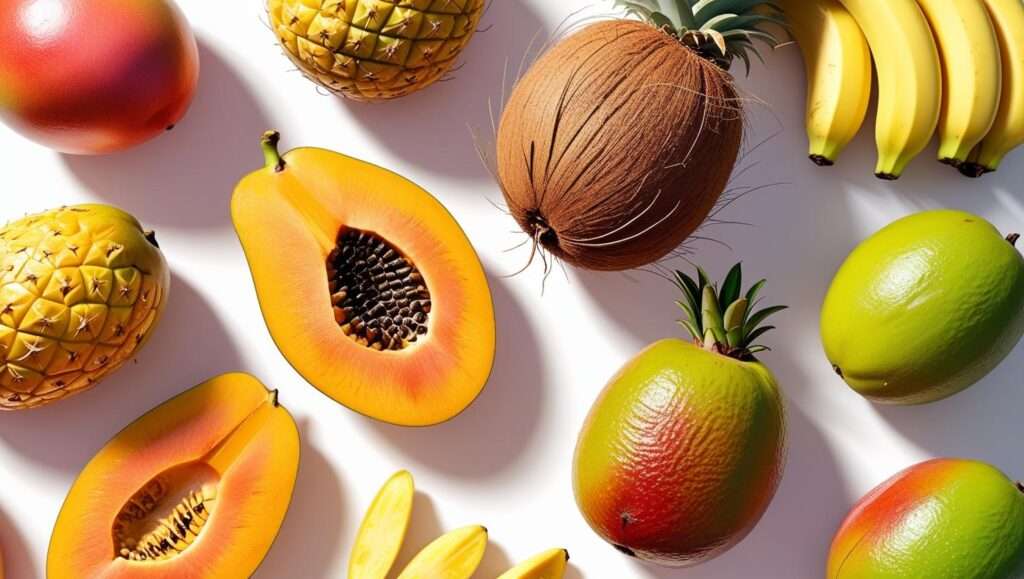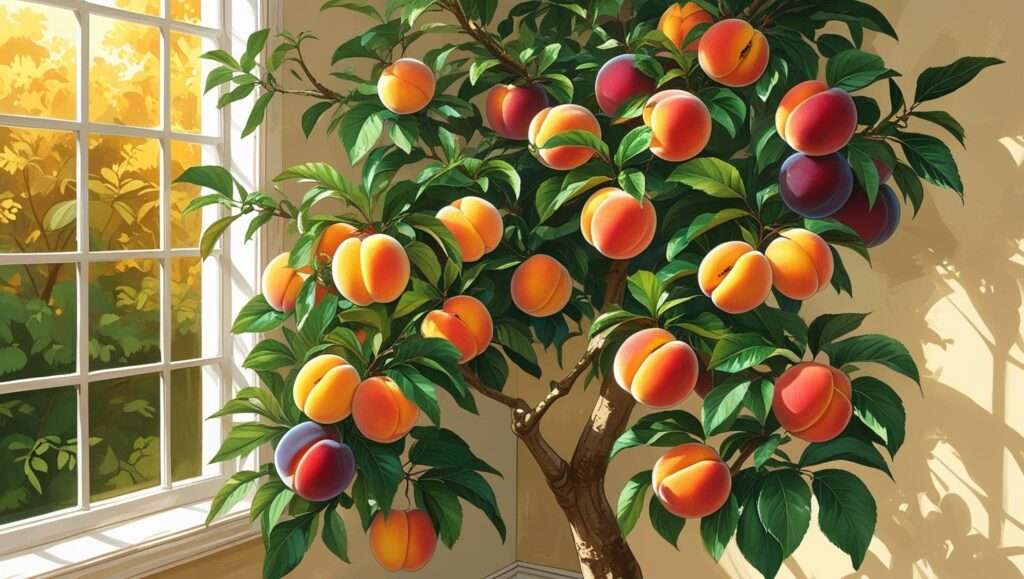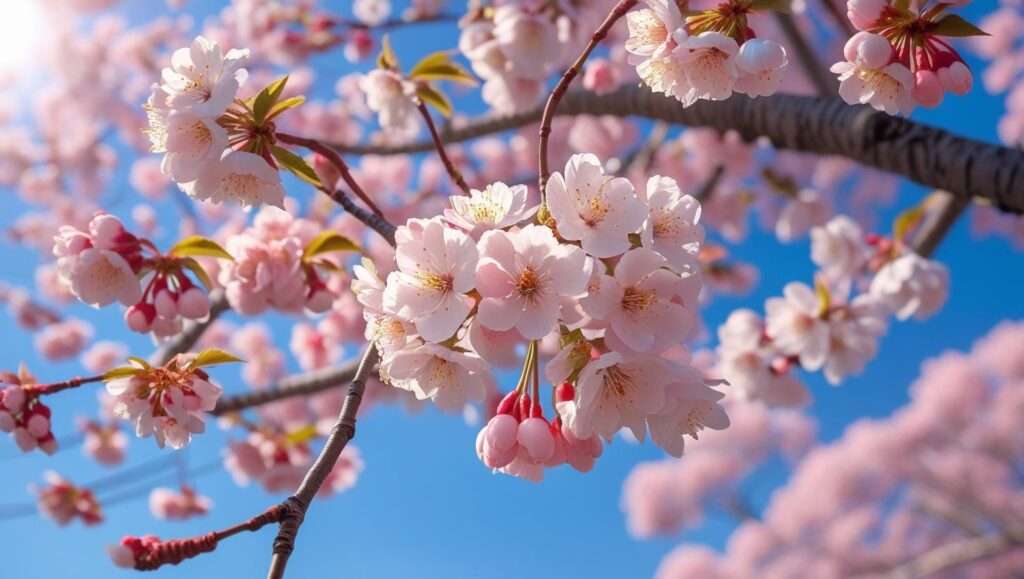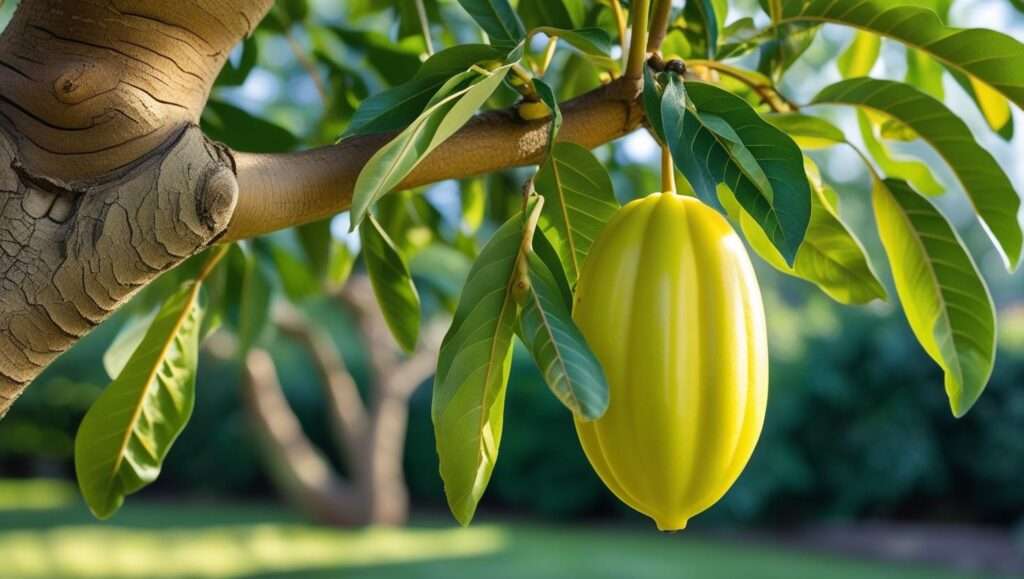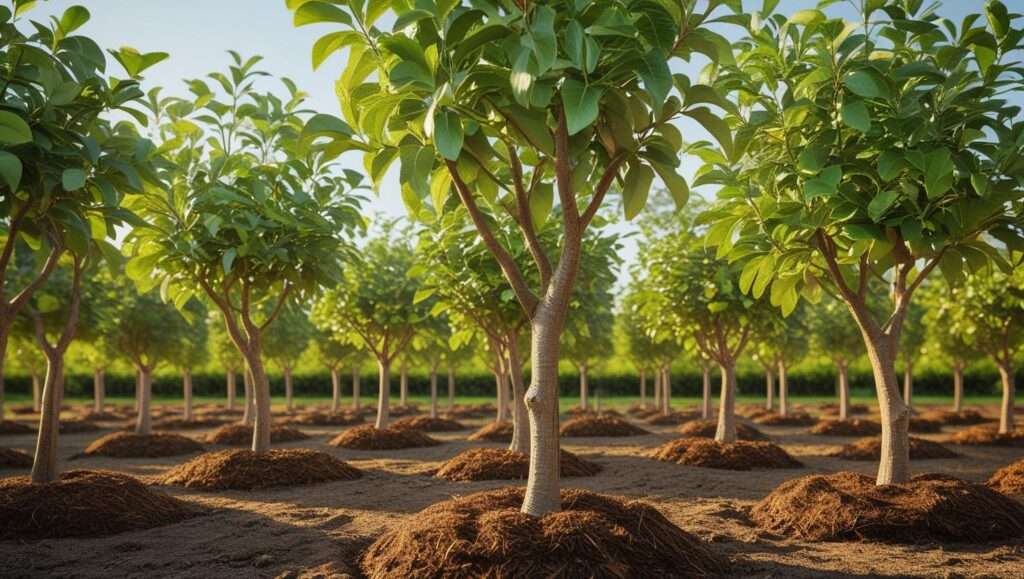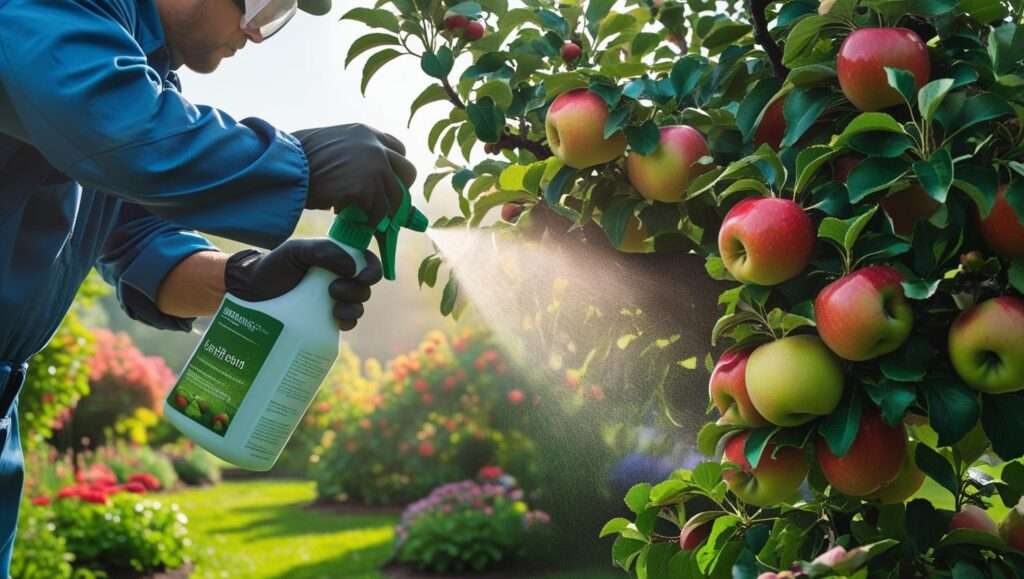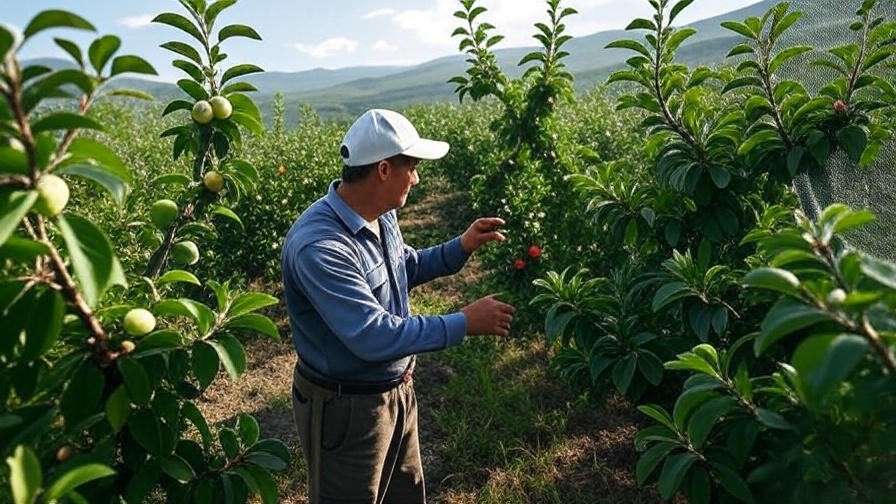Picture this: a tiny tree, no taller than a foot, adorned with vibrant green leaves and clusters of ripe, juicy fruit, sitting proudly on your patio or windowsill. This is the magic of a bonsai fruit tree—a perfect blend of nature’s artistry and practical gardening. Whether you’re an urban dweller with limited space or a seasoned gardener seeking a new challenge, growing a bonsai fruit tree offers a rewarding way to cultivate edible produce while creating a stunning living sculpture. In this comprehensive guide, you’ll discover five expert tips to select, plant, prune, care for, and harvest fruit from your bonsai fruit tree, transforming your home into a thriving mini orchard.
With over a decade of experience in bonsai cultivation and fruit tree horticulture, I’ve crafted this guide to address the needs of beginners and seasoned growers alike. Backed by insights from leading bonsai masters and agricultural research, this article will equip you with practical, actionable advice to ensure your bonsai fruit tree flourishes. Let’s dive into the art and science of growing these miniature marvels.
What Is a Bonsai Fruit Tree?
Understanding Bonsai and Fruit Trees
Bonsai, a centuries-old Japanese art form, involves cultivating miniature trees that mimic the shape and scale of their full-sized counterparts. Unlike traditional bonsai, which focus purely on aesthetics, bonsai fruit trees serve a dual purpose: they produce edible fruit while maintaining a compact, artistic form. These trees are carefully shaped through pruning and training to remain small, typically under 3 feet tall, yet they yield fruits like apples, oranges, figs, or pomegranates.
Popular varieties include dwarf apple (Malus spp.), calamondin orange (Citrus mitis), fig (Ficus carica), and pomegranate (Punica granatum). Each variety offers unique visual appeal and fruiting potential, making them ideal for both novice and experienced gardeners.
Benefits of Growing a Bonsai Fruit Tree

Why choose a bonsai fruit tree? Here are some compelling reasons:
- Space-Saving: Perfect for small apartments, balconies, or patios, these trees thrive in confined spaces.
- Aesthetic Appeal: Their sculpted forms and vibrant fruits make them stunning decorative pieces.
- Educational Value: Growing a bonsai fruit tree teaches patience, precision, and advanced horticultural techniques.
- Sustainable Micro-Farming: Harvest your own fruit, reducing reliance on store-bought produce.
Expert Insight: “A bonsai fruit tree is more than a plant—it’s a living work of art that rewards you with both beauty and bounty,” says Hiroshi Tanaka, a renowned bonsai master with 30 years of experience.
Tip 1: Choosing the Right Bonsai Fruit Tree for Your Environment
Assessing Your Space and Climate
Selecting the right bonsai fruit tree starts with understanding your environment. Consider whether you’ll grow your tree indoors or outdoors, as this impacts light, temperature, and humidity needs. Indoor environments suit tropical varieties like citrus, which thrive in consistent warmth (60–75°F) and humidity. Outdoor settings are better for temperate species like apples or cherries, which require seasonal dormancy.
Evaluate your space: a small pot (8–12 inches wide) is typically sufficient, but ensure the area receives adequate sunlight (at least 6 hours daily for most fruit trees). Check your USDA hardiness zone if growing outdoors to match the tree’s climate needs.
Top Bonsai Fruit Tree Varieties for Beginners
For those new to bonsai, start with forgiving, low-maintenance varieties:
- Dwarf Apple (Malus spp.): Hardy and adaptable, producing small, edible apples in 3–5 years.
- Calamondin Orange (Citrus mitis): Ideal for indoor growing, with fragrant flowers and tart, edible oranges.
- Fig (Ficus carica): Resilient and prolific, yielding sweet figs with minimal care.
- Pomegranate (Punica granatum): Striking red flowers and small, juicy fruits, perfect for sunny spots.
Where to Source Quality Bonsai Fruit Trees
Purchase from reputable sources like local bonsai nurseries, trusted online retailers (e.g., Bonsai Boy or Eastern Leaf), or bonsai clubs. Look for trees with vibrant leaves, sturdy trunks, and no signs of pests or disease. A healthy root system, visible through drainage holes, is critical for long-term success.
Example: Sarah, a beginner from Chicago, bought a dwarf apple bonsai from a local nursery. With proper care, her tree produced its first apples within three years, thriving on her sunny balcony.
Tip 2: Mastering the Art of Bonsai Fruit Tree Planting
Selecting the Right Pot and Soil

The pot and soil are the foundation of a healthy bonsai fruit tree. Choose a shallow, ceramic pot (8–12 inches in diameter) with drainage holes to restrict root growth while allowing proper water flow. Avoid plastic pots, as they retain too much moisture.
Use a well-draining soil mix, such as 50% akadama, 25% pumice, and 25% lava rock, to promote aeration and prevent root rot. For beginners, a pre-mixed bonsai soil from a reputable supplier works well.
Planting Techniques for Bonsai Fruit Trees
Follow these steps to plant your bonsai fruit tree:
- Prepare the Pot: Place a mesh screen over drainage holes to prevent soil loss.
- Add Base Soil: Spread a thin layer of soil mix at the pot’s base.
- Position the Tree: Center the tree, spreading roots evenly without crowding.
- Fill with Soil: Add soil gradually, pressing gently to eliminate air pockets.
- Water Thoroughly: Soak the soil until water drains from the bottom.
- Wire for Shape: Use bonsai wire to gently shape branches, avoiding tight wraps that damage bark.
Initial Care After Planting
Place your newly planted bonsai in a bright location with indirect sunlight for the first 2–3 weeks to reduce transplant shock. Water when the top inch of soil feels dry, typically every 2–3 days. Avoid fertilizing for the first month to let the tree acclimate.
Tip: Overwatering is a common mistake. Always check soil moisture with your finger or a moisture meter before watering.
Tip 3: Pruning and Shaping Your Bonsai Fruit Tree
Why Pruning Is Essential
Pruning is the heart of bonsai cultivation, ensuring your tree remains compact, healthy, and productive. For fruit trees, pruning balances energy between foliage, fruit, and roots, promoting larger, tastier yields while maintaining the desired shape.
Pruning Techniques for Bonsai Fruit Trees
- Structural Pruning: In late winter or early spring, remove large branches to define the tree’s framework. Use concave cutters for clean cuts that heal quickly.
- Maintenance Pruning: Throughout the growing season, trim overcrowded or dead branches to improve air circulation and light exposure.
- Fruit-Specific Pruning: Thin flower buds in spring to reduce fruit load, ensuring larger, healthier fruits.
Shaping for Beauty and Function
Bonsai fruit trees can be styled in forms like informal upright, cascade, or semi-cascade, depending on the variety. For example, a fig tree suits a windswept style, while a citrus tree looks elegant in an upright form. Use bonsai shears and aluminum wire to guide branches, checking monthly to prevent wire from cutting into bark.
Expert Insight: “Pruning is a conversation with the tree. Listen to its growth patterns, and you’ll create both beauty and bounty,” says Maria Gonzalez, a bonsai pruning specialist.
Tip 4: Caring for Your Bonsai Fruit Tree Year-Round
Watering and Fertilizing
Watering needs vary by season and tree type. Tropical varieties like citrus require consistent moisture, while temperate species like apples need less during dormancy. Water when the top inch of soil is dry, typically every 2–4 days in summer and weekly in winter.
Fertilize monthly during the growing season (spring and summer) with a balanced, organic fertilizer (e.g., 5-5-5 NPK) or a fruit-specific blend high in phosphorus and potassium. Reduce feeding in fall and winter for temperate trees.
Pest and Disease Management
Common pests include aphids, spider mites, and scale insects. Inspect leaves weekly and use neem oil or insecticidal soap for natural control. Prevent diseases like root rot or powdery mildew by ensuring good drainage, air circulation, and avoiding overwatering.
Seasonal Care Tips

- Spring: Boost growth with balanced fertilizer and prune for shape.
- Summer: Protect from intense heat with partial shade and monitor water needs.
- Fall: Prepare temperate trees for dormancy by reducing water and fertilizer.
- Winter: Move tropical bonsai indoors (above 50°F) and provide grow lights if needed.
Example: A seasonal care calendar for a calamondin orange bonsai includes daily summer watering, biweekly spring fertilizing, and winter placement near a south-facing window.
Tip 5: Encouraging Fruit Production in Your Bonsai
Pollination Techniques
Fruit production begins with pollination, and bonsai fruit trees often need a little help, especially indoors. For indoor trees like calamondin oranges or figs, hand-pollination is simple and effective. Use a small paintbrush or cotton swab to transfer pollen from the stamen (male part) to the pistil (female part) of flowers. Gently brush the inside of each flower to ensure successful pollination.
For outdoor bonsai, encourage natural pollinators like bees by placing your tree near flowering plants or adding companion plants like marigolds. If your tree is a self-pollinating variety (e.g., many figs), you may not need to intervene, but monitoring flower health is still key.
Optimizing Light and Nutrition

Light is critical for fruit development. Most bonsai fruit trees need at least 6–8 hours of direct sunlight daily. For indoor trees, supplement natural light with full-spectrum grow lights (10,000–20,000 lumens) placed 12–18 inches above the canopy for 12–14 hours daily. Rotate the tree weekly to ensure even light exposure.
Nutrition plays a major role in fruiting. During the flowering and fruiting stages, switch to a fertilizer high in phosphorus and potassium (e.g., 5-10-10 NPK) to support bud formation and fruit growth. Apply every 2–3 weeks during the growing season, diluting to half-strength to avoid root burn.
Managing Fruit Load
Too many fruits can stress a bonsai, leading to smaller yields or branch damage. Thin fruit clusters early in the season, leaving 1–2 fruits per branch for dwarf apples or 3–4 for figs. This ensures larger, healthier fruits and maintains the tree’s compact form. For example, pomegranates may produce dozens of flowers, but thinning to 2–3 fruits per tree optimizes quality.
Timing varies by species: citrus trees may fruit within 1–2 years, while apples or cherries take 3–5 years. Patience is key, as young trees prioritize root and branch development before heavy fruiting.
Tip: If your bonsai fruit tree isn’t producing, check for insufficient light, poor pollination, or nutrient imbalances (e.g., too much nitrogen, which favors leaves over fruit).
Common Challenges and How to Overcome Them
Root Rot and Overwatering
Root rot, caused by overwatering or poor drainage, is a common issue. Signs include yellowing leaves, a soggy soil surface, or a foul odor from the roots. To fix:
- Check Drainage: Ensure the pot has adequate drainage holes and a well-draining soil mix.
- Adjust Watering: Water only when the top inch of soil is dry. Use a moisture meter for precision.
- Repot if Needed: If rot is severe, remove the tree, trim affected roots, and repot in fresh soil.
Leaf Drop or Poor Growth
Leaf drop or stunted growth often signals environmental stress. Common causes include:
- Insufficient Light: Move the tree to a brighter location or add grow lights.
- Improper Pruning: Over-pruning can shock the tree; stick to light trims during the growing season.
- Nutrient Imbalance: Test soil pH (ideal range: 6.0–7.0) and adjust fertilizer if needed.
Fix: Relocate the tree to a sunnier spot, reduce pruning frequency, and apply a balanced fertilizer to restore vigor.
Pest Infestations
Pests like aphids, spider mites, or scale insects can harm bonsai fruit trees. Inspect leaves and stems weekly, especially under leaves where pests hide. For treatment:
- Neem Oil: Mix 1 tsp neem oil with 1 quart water and spray weekly.
- Insecticidal Soap: Apply to affected areas, avoiding overuse to prevent leaf burn.
- Companion Planting: Place marigolds or basil near outdoor bonsai to deter pests naturally.
Example: Emma, a gardener in California, revived her struggling fig bonsai by addressing spider mites with neem oil and improving light exposure. Within two months, new growth and fruit buds appeared.
Advanced Tips for Experienced Bonsai Enthusiasts
Grafting for Unique Varieties
Grafting allows you to create custom bonsai fruit trees by combining desirable traits. For example, graft a scion from a high-yield apple cultivar onto a dwarf rootstock for better fruit production. To graft:
- Select Materials: Choose a healthy scion (branch cutting) and compatible rootstock.
- Make Clean Cuts: Use a grafting knife to create a diagonal cut on both scion and rootstock.
- Join and Secure: Align the cuts and wrap with grafting tape.
- Monitor Growth: Keep the graft moist and protected for 4–6 weeks until it takes.
Tools: Grafting knife, tape, and pruning seal to prevent infection.
Creating Multi-Fruit Bonsai
For a show-stopping bonsai, graft multiple fruit varieties onto a single tree. For instance, combine dwarf apple and pear scions on one rootstock for a tree that produces both fruits. This requires precise grafting and careful pruning to balance growth, but the result is a unique, conversation-starting bonsai.
Exhibiting Your Bonsai Fruit Tree
Ready to showcase your bonsai? Prepare for exhibitions by:

- Polishing the Pot: Clean and polish ceramic pots for a professional look.
- Perfecting Shape: Fine-tune pruning and wiring for symmetry and balance.
- Highlighting Fruit: Time pruning and thinning to display ripe, vibrant fruits during the show.
Expert Insight: “A well-prepared bonsai fruit tree can steal the show with its blend of form and function,” says Lisa Chen, a bonsai competition winner with 15 years of experience.
FAQs About Bonsai Fruit Trees
Q1: How long does it take for a bonsai fruit tree to produce fruit?
A: Depending on the variety, expect fruit in 1–2 years for citrus or figs and 3–5 years for apples or pomegranates. Proper care accelerates this timeline.
Q2: Can bonsai fruit trees grow indoors year-round?
A: Tropical varieties like calamondin oranges thrive indoors with adequate light and humidity. Temperate species need outdoor dormancy periods in winter.
Q3: What is the easiest bonsai fruit tree for beginners?
A: Fig (Ficus carica) and calamondin orange are low-maintenance and forgiving, ideal for novices.
Q4: How often should I repot my bonsai fruit tree?
A: Repot every 2–3 years for young trees or 3–5 years for mature ones, ideally in early spring before new growth.
Q5: Are the fruits from bonsai trees safe to eat?
A: Yes, fruits are edible and safe, provided the tree is healthy and not treated with toxic pesticides.
Growing a bonsai fruit tree is a journey that blends artistry, patience, and the joy of harvesting your own fruit. By following these five essential tips—choosing the right tree, planting with care, pruning strategically, maintaining year-round health, and encouraging fruit production—you can create a thriving mini orchard at home. Whether you’re shaping a dwarf apple into an elegant cascade or harvesting tiny oranges from a calamondin, your bonsai fruit tree will reward you with beauty and bounty.
Start your bonsai adventure today and join a community of passionate growers. Share your progress, favorite varieties, or questions in the comments below—we’d love to hear about your mini orchard! For more gardening tips, explore our articles on bonsai care basics or small-space fruit gardening.

